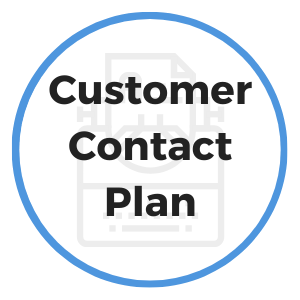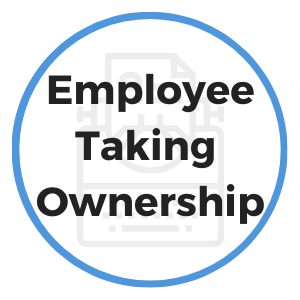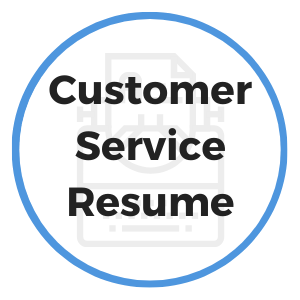- Home
- Customer Service Articles
- Tracking Customer Service
Tracking Customer Service for Improved Results
Tracking customer service results can be accomplished using a variety of key metrics, which we'll go into in a moment. Which measurements you use will depend on the type of business and the overall goals of the organization.
Leaders agree that anything considered to be important to the success of the business must be measured, tracked, reported and analyzed over time. Delivering quality customer service is a cornerstone to almost any business, but not everyone know how to properly track service results.
A smart business owner or team leader would cringe at the thought not tracking sales production, personnel expense or bottom-line profits. Yet too often organizations do not place the same level of emphasis on tracking customer service, which can be detrimental to the business over time.
Too many business owners do not see the art of customer service as something you can attach a hard number to. They simply feel that customer service is more of an abstract concept versus a concrete outcome that can be effectively measured. It's understandable when you think about the fact that there is no line item with an amount stated on your balance sheet or income statement that says "Customer Service".
However, the quality of customer service delivered by your employees is most definitely baked into your sales and expense numbers. For example, if service levels are poor, sales will be impacted negatively, and expenses will be higher because you'll pay more in marketing and other costs to attract new customers. Of course, the reverse is true as well, which is why every business must pay close attention to tracking customer service levels.
"You’ll never have a product or price advantage again. They can be too easily duplicated. But a strong customer service culture cannot be copied."
- Jerry Fritz
In fact, due to the strong correlation between customer service and sales, leaders should place the highest priority on the consistent delivery of a quality customer experience. Service delivery must be considered as sacred by all who work in your organization.
To ensure the long-term success of your business customer service must be a top priority. A strong commitment to delivering great service to the customer should be in the hearts and minds of each employee.
Key Metrics for Tracking Customer Service
When tracking customer service most businesses don't rely on just one metric, rather they choose multiple metric and analyze how results from each metric aligns with each other as well as how result align with production and expense levels.
Here are just a few of the most common metrics for tracking customer service:
- Customer Attrition Ratio = number of customers leaving / total number of customers (for the same time period) – the higher the ratio, the less likely it is that your company is consistently delivering quality customer service.
- Sales Growth - your reputation precedes you. If people are still buying from you, and referring others, chances are they are happy with the service and they are loyal to your organization. Keep it up!
- Customer Survey Results - directly asking customers to rate the service level they receive is one simple way of tracking customer service quality. Avoid the temptation of asking too many questions on one survey. By keeping surveys short and focused will increase the chance that customers will take time to complete the survey.
- Customer Complaints - be thankful for each complaint that comes to your attention. You can only provide a thoughtful response to customer issues once you are made aware of the issue. When customer’s complain they represent not just their issue, but perhaps an issue that is affecting others.
"It is not the employer who pays the wages. Employers only handle the money. It is the customer who pays the wages."
- Henry Ford
- Wait Time - whether your business has a fully staffed call center or just a single phone, the amount of time a customer calling into your business has to wait is important. Customers don't like sitting on hold, so the sooner they can get their question answered, the more likely they are to frequent your business.
- Average Resolution Time - no business is perfect and no matter how good your people are they are still human and they will make the occasional mistake. When a mistakes occur that impact the customer it's critical that the issue is resolved in a timely manner. Certain types of issues may require longer resolution times so take time to develop Service Level Agreements (SLA's) or goals for timely resolutions to various issue types.
- Customer Retention - satisfied customers will stay with your business over a long period of time. When customers can count on always receiving great customer service they are even likely to pay a premium, meaning they may stay with you even if you don't offer the best prices. Quality of service counts for a lot in the eyes of your customers.
- Employee Productivity - whether you're tracking customer service levels of sales or support employees, make sure to assign productivity goals and track their results. If an employee is not meeting their goals it's an indicator that something is wrong and the employee needs some level of coaching and assistance. When an employee is struggling it can directly impact the customer experience, so it's important to keep every team member on a positive track.
- Employee Turnover - while it's ideal have low turnover and maintain long term highly productive and service oriented employees, sometimes turnover can be a good thing. If an employee is unhappy in a job that just doesn't suit them, they may need you to help them find happiness elsewhere. On the other hand, if it's just a matter of providing addition training and support then that should be your focus. It costs a lot to attract, hire and train employees so the less of that you have to do the better. Make certain you know the reasons behind turnover so you can properly assess any impact to customer service levels.
- Net Promoter Score (NPS) - this is a simple yet very popular customer service metric used by many large corporations. NPS asks the question "How likely are you to recommend the business, product or service to a friend or family member?" Customers respond by choosing a number between 1-10. The higher the number reflects the level of customer loyalty. For more insights, read this NPS article.
As you can now see, there are many different metrics for tracking customer service levels for your business. Choose the metrics that are most meaningful to your business and track them. Share results with your team members and recognize top service performers on a regular basis.
You will know your organization is successful in the area of customer
service when every employee “instinctively” responds to any customer
inquiry with the phrase:
"Yes Mr./Mrs. Customer, I can help you with that!”





